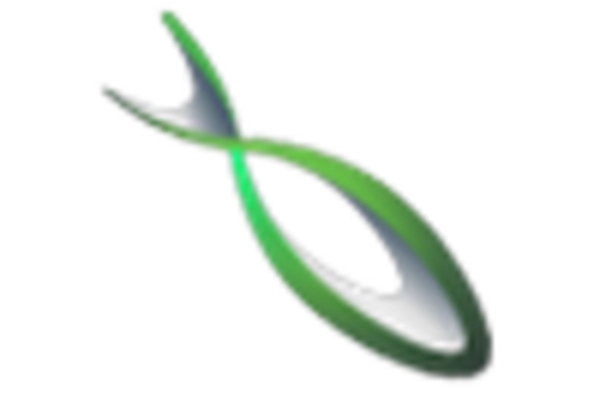The Fish Processing Equipment Market is currently characterized by a dynamic competitive landscape, driven by technological advancements, sustainability initiatives, and increasing demand for processed seafood. Major players such as Marel (Iceland), Bühler (Switzerland), and JBT Corporation (United States) are at the forefront, each adopting distinct strategies to enhance their market positioning. Marel (Iceland) focuses on innovation through the development of advanced processing technologies, while Bühler (Switzerland) emphasizes sustainability in its operations, aiming to reduce waste and energy consumption. JBT Corporation (United States) is actively pursuing strategic partnerships to expand its global footprint, thereby enhancing its competitive edge. Collectively, these strategies contribute to a robust competitive environment, where innovation and sustainability are paramount.
In terms of business tactics, companies are increasingly localizing manufacturing to reduce lead times and optimize supply chains. The Fish Processing Equipment Market appears moderately fragmented, with several key players exerting influence over various segments. This fragmentation allows for niche players to thrive, while larger corporations leverage their resources to dominate the market. The collective influence of these key players shapes the market structure, fostering an environment where technological advancements and operational efficiencies are critical for success.
In August 2025, Marel (Iceland) announced the launch of its new automated fish processing line, which integrates AI technology to enhance efficiency and reduce labor costs. This strategic move is significant as it positions Marel as a leader in automation within the fish processing sector, potentially setting new industry standards for productivity and operational excellence. The integration of AI not only streamlines processes but also aligns with the growing trend towards digital transformation in food processing.
In September 2025, Bühler (Switzerland) unveiled its latest sustainability initiative aimed at minimizing the carbon footprint of fish processing operations. This initiative includes the implementation of energy-efficient machinery and waste reduction technologies. The strategic importance of this move lies in Bühler's commitment to sustainability, which resonates with increasing consumer demand for environmentally friendly practices. By prioritizing sustainability, Bühler enhances its brand reputation and appeals to a broader market segment that values eco-conscious products.
In July 2025, JBT Corporation (United States) entered into a strategic partnership with a leading seafood distributor to enhance its distribution capabilities in Asia. This partnership is crucial as it allows JBT to tap into emerging markets, thereby expanding its reach and increasing market share. The collaboration not only strengthens JBT's operational capabilities but also positions the company to better serve the growing demand for processed seafood in the region.
As of October 2025, the Fish Processing Equipment Market is witnessing trends such as digitalization, sustainability, and AI integration, which are redefining competitive dynamics. Strategic alliances are increasingly shaping the landscape, enabling companies to leverage complementary strengths and enhance their market presence. Looking ahead, competitive differentiation is likely to evolve from traditional price-based competition to a focus on innovation, technology, and supply chain reliability. This shift underscores the importance of adapting to market demands and investing in advanced technologies to maintain a competitive edge.


















Leave a Comment